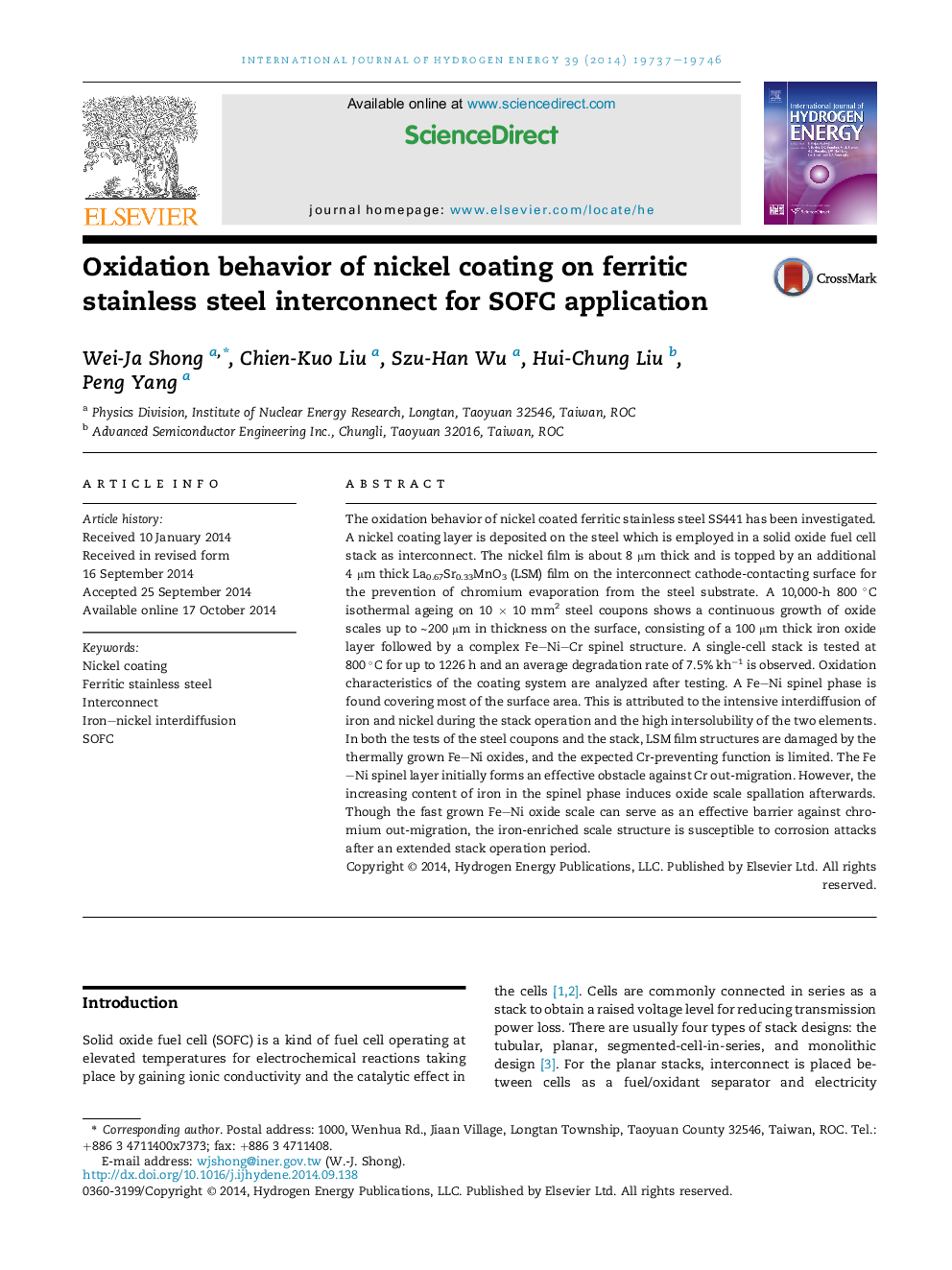| کد مقاله | کد نشریه | سال انتشار | مقاله انگلیسی | نسخه تمام متن |
|---|---|---|---|---|
| 1280726 | 1497475 | 2014 | 10 صفحه PDF | دانلود رایگان |

• Nickel was electrolessly plated on ferritic stainless steel as SOFC stack interconnect.
• Ni coating induced significant out-migration of Fe from the steel substrate.
• Active interdiffusion of Ni and Fe caused fast growth of Fe–Ni oxide scale.
• Fe–Ni oxide scale offered an effective barrier against chromium evaporation.
• Cracking and spallation could occur as Fe-enriched oxide scale became overly thick.
The oxidation behavior of nickel coated ferritic stainless steel SS441 has been investigated. A nickel coating layer is deposited on the steel which is employed in a solid oxide fuel cell stack as interconnect. The nickel film is about 8 μm thick and is topped by an additional 4 μm thick La0.67Sr0.33MnO3 (LSM) film on the interconnect cathode-contacting surface for the prevention of chromium evaporation from the steel substrate. A 10,000-h 800 °C isothermal ageing on 10 × 10 mm2 steel coupons shows a continuous growth of oxide scales up to ∼200 μm in thickness on the surface, consisting of a 100 μm thick iron oxide layer followed by a complex Fe–Ni–Cr spinel structure. A single-cell stack is tested at 800 °C for up to 1226 h and an average degradation rate of 7.5% kh−1 is observed. Oxidation characteristics of the coating system are analyzed after testing. A Fe–Ni spinel phase is found covering most of the surface area. This is attributed to the intensive interdiffusion of iron and nickel during the stack operation and the high intersolubility of the two elements. In both the tests of the steel coupons and the stack, LSM film structures are damaged by the thermally grown Fe–Ni oxides, and the expected Cr-preventing function is limited. The Fe–Ni spinel layer initially forms an effective obstacle against Cr out-migration. However, the increasing content of iron in the spinel phase induces oxide scale spallation afterwards. Though the fast grown Fe–Ni oxide scale can serve as an effective barrier against chromium out-migration, the iron-enriched scale structure is susceptible to corrosion attacks after an extended stack operation period.
Journal: International Journal of Hydrogen Energy - Volume 39, Issue 34, 20 November 2014, Pages 19737–19746